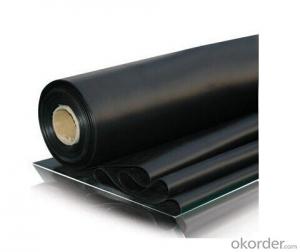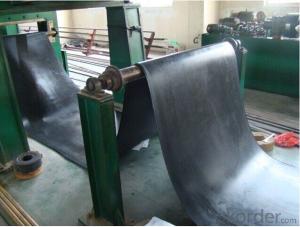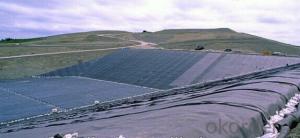EPDM Rubber Vulcanization Waterproof Membrane 1.2mm/1.5mm/2.0mm
- Loading Port:
- Qingdao
- Payment Terms:
- TT or LC
- Min Order Qty:
- 3000 m²
- Supply Capability:
- 300000 m²/month
OKorder Service Pledge
OKorder Financial Service
You Might Also Like
EPDM Waterproof Membrane
Introduction for EPDM Waterproof Membrane
EPDM waterproof membrane is made from ternary ethylene-propylene rubber. With the best performance among high polymer waterproof materials, EPDM is of exceptional elasticity and will not split or crack under normal building movement.
Characteristics for EPDM Waterproof Membrane
1.Excellent anti-aging performance, service life can reach 50 years;
2.High elongation, high tensile strength, heat treatment size change small;
3.Plant root penetration resistance is good
4.Good low temperature flexibility
5.Application is convenient, overlapping is firm and reliable, no environmental pollution;
6. Resistance to chemical corrosion, can be applied to special places;
7.Maintenance is convenient, the cost is low
Uses for EPDM Waterproof Membrane
Widely used in roofs, basement, toilet ,swimming pool, and all kinds of industry and civil building waterproofing, reservoir, vivicism, bridge, underground, tunnel and dam waterproofing ,especially to the keystone waterproofing projects which is durability, high corrosion resistance and easy deformation
Specification for EPDM Waterproof Membrane
Item | Thick(mm) | Width | Length(m) | Color |
Spe | 1.0—2.0 | 1.2m/2m/3m/4m | 20 | Black |
Deviation | -1 +15 | --1 | Multicolor |
Technical Data for EPDM Waterproof Membrane
Item | value | ||
JL1 | JF1 | ||
Tensile Strength (Mpa) | normal tamperature | 7.5 | 4.0 |
60°C ≥ | 2.3 | 0.8 | |
Elongation at break (%) | normal tamperature ≥ | 450 | 450 |
-20°C ≥ | 200 | 200 | |
Tear Resistance (N) | ≥ | 25 | 18 |
Water impermeability | 30mm | 0.3Mpa | 0.3Mpa |
Cold bending | (°C) ≤ | -40 | -30 |
Heating Shrinking rate | extand << span=""> | 2 | 2 |
shrink << span=""> | 4 | 4 | |
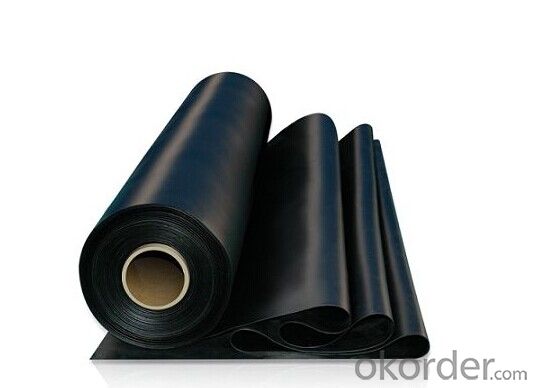
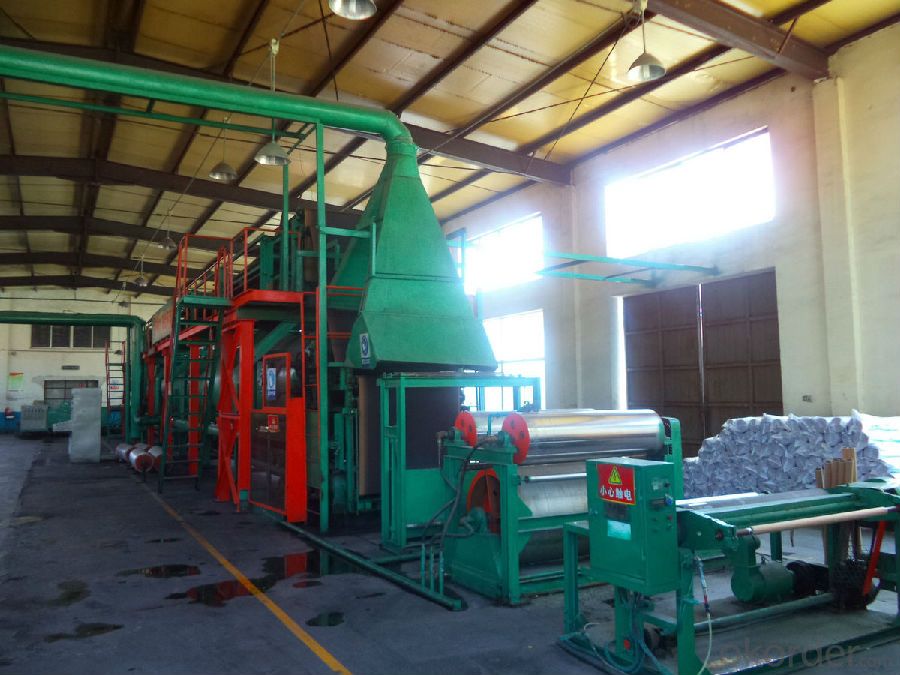
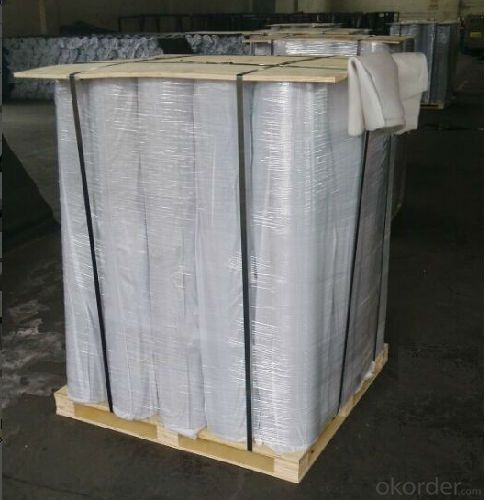
FAQ:
Can you produce 4m width?
Yes, no problem for us. We have four bases in China, largest one in this field.
How many quantity in one 20'' container for 1.2mm and 1.5mm?
480rolls, 11520m2 for 1.2mm and 400rolls, 9600m2 for 1.5mm
Can you provide free samples?
Yes, our samples are free, but express fees usually on buyer's account.
- Q:Can a waterproofing membrane be used on zinc surfaces?
- Certainly! Zinc surfaces can indeed benefit from the application of a waterproofing membrane. Zinc is widely used for its durability and resistance to corrosion, making it a popular choice for various purposes such as roofing and cladding. By adding a waterproofing membrane to zinc surfaces, an extra layer of protection against water intrusion and moisture damage can be achieved. This not only helps prevent leaks, but also extends the lifespan of the zinc surface and preserves its overall integrity. However, it is crucial to ensure that the chosen waterproofing membrane is compatible with zinc and specifically designed for such applications. To determine the most suitable waterproofing solution for zinc surfaces, it is advisable to seek professional advice or consult with the manufacturer.
- Q:Can a waterproofing membrane be certified or approved by industry organizations?
- Yes, a waterproofing membrane can be certified or approved by industry organizations. There are various industry organizations and standards bodies that evaluate and certify building materials and products, including waterproofing membranes. These certifications or approvals ensure that the membrane meets specific quality and performance standards set by the industry. Industry organizations such as the International Organization for Standardization (ISO), Underwriters Laboratories (UL), and the American Society for Testing and Materials (ASTM) often provide certifications or approvals for waterproofing membranes. These certifications involve rigorous testing and evaluation of the membrane's physical properties, such as its ability to resist water penetration, durability, and compatibility with other building materials. Certifications or approvals from industry organizations provide assurance to consumers, architects, contractors, and building owners that the waterproofing membrane has undergone testing and meets recognized standards for quality and performance. They also help in building code compliance and may be required for certain projects. It is always advisable to look for waterproofing membranes that have been certified or approved by reputable industry organizations to ensure that you are using a reliable and effective product for your waterproofing needs.
- Q:Can waterproofing membranes be painted over?
- Painting over a waterproofing membrane is indeed possible. Nevertheless, it is crucial to verify the compatibility between the paint and the membrane material. It is advisable to refer to the manufacturer's guidelines or seek expert advice in order to guarantee the paint adheres well and lasts long. Furthermore, prior to applying the paint, the surface must be clean and dry to achieve optimal outcomes. All in all, painting over a waterproofing membrane can improve its aesthetic and offer extra safeguard against UV rays and other environmental elements.
- Q:Can a waterproofing membrane be used in earthquake-prone areas?
- Using a waterproofing membrane in areas prone to earthquakes is not only possible but highly advisable. This is because it serves as an effective shield against water infiltration, which can cause significant harm to buildings and structures during seismic events. The main purpose of waterproofing membranes is to create a barrier that prevents water from seeping in, thereby safeguarding the structural integrity of a building. Moreover, these membranes possess some degree of flexibility and elasticity, allowing them to absorb and distribute the forces exerted during an earthquake. This reduces the likelihood of cracks and leaks occurring. Nonetheless, it is crucial to ensure that the waterproofing membrane chosen is specifically designed and tested to meet the requirements of earthquake-prone areas. Factors such as the intensity and frequency of seismic activity in the region should be taken into account. Seeking advice from a structural engineer or waterproofing specialist is highly recommended to identify the most suitable waterproofing system for earthquake-prone areas.
- Q:Does a waterproofing membrane provide any protection against radon gas?
- No, a waterproofing membrane does not provide protection against radon gas. Radon gas is a radioactive gas that can seep through building materials, including waterproofing membranes. To protect against radon gas, specialized radon mitigation systems are required.
- Q:Can a waterproofing membrane be installed by a homeowner, or is professional installation necessary?
- While it is technically possible for a homeowner to install a waterproofing membrane, professional installation is highly recommended. Waterproofing membranes require specialized knowledge and expertise to ensure proper installation and effectiveness. Professionals have the necessary skills, tools, and experience to address potential challenges and ensure a long-lasting and reliable waterproofing solution. Additionally, professional installation often comes with warranties and guarantees, providing homeowners with added peace of mind.
- Q:Can a waterproofing membrane be used on roofs with flat surfaces?
- Yes, a waterproofing membrane can be used on roofs with flat surfaces. In fact, waterproofing membranes are commonly used on flat roofs to provide protection against water infiltration. These membranes are designed to create a barrier that prevents water from seeping into the roof structure and causing damage. They are typically made of materials such as modified bitumen, EPDM, or PVC, which are highly resistant to water and UV rays. The membrane is installed over the roof surface and can be either torch-applied, adhered with adhesive, or mechanically fastened. It is important to ensure proper installation and regular maintenance to maximize the effectiveness and lifespan of the waterproofing membrane on a flat roof.
- Q:Is a waterproofing membrane resistant to punctures or tears?
- Yes, a waterproofing membrane is designed to be resistant to punctures or tears. It is typically made from durable materials such as PVC, TPO, or EPDM, which are known for their strength and resistance to damage. These membranes undergo rigorous testing to ensure their ability to withstand various environmental conditions and potential sources of punctures or tears, such as sharp objects or heavy foot traffic. Additionally, some waterproofing membranes come with reinforcement layers or added protection to further enhance their puncture and tear resistance. However, it is important to note that while waterproofing membranes are highly resilient, they are not completely impervious to damage. Proper installation, regular maintenance, and avoiding unnecessary stress or impact on the membrane can help maximize its longevity and performance.
- Q:Can a waterproofing membrane be tiled over?
- Yes, a waterproofing membrane can be tiled over. Tiling over a waterproofing membrane provides an additional layer of protection against water damage and helps create a durable and moisture-resistant surface.
- Q:Can a waterproofing membrane be used for basements and crawl spaces?
- Basements and crawl spaces can benefit greatly from the use of a waterproofing membrane. To safeguard against water damage and moisture-related problems, it is highly advisable to employ a waterproofing membrane in these areas. The waterproofing membrane functions as a slim layer of material that is applied to the walls and floors of basements and crawl spaces, establishing a barrier against water and moisture infiltration. This technique effectively keeps the area dry and averts water seepage, which can lead to structural deterioration, mold growth, and various other complications. Waterproofing membranes are built to be resilient and enduring, offering a dependable solution for safeguarding basements and crawl spaces against water intrusion.
1. Manufacturer Overview |
|
|---|---|
| Location | |
| Year Established | |
| Annual Output Value | |
| Main Markets | |
| Company Certifications | |
2. Manufacturer Certificates |
|
|---|---|
| a) Certification Name | |
| Range | |
| Reference | |
| Validity Period | |
3. Manufacturer Capability |
|
|---|---|
| a)Trade Capacity | |
| Nearest Port | |
| Export Percentage | |
| No.of Employees in Trade Department | |
| Language Spoken: | |
| b)Factory Information | |
| Factory Size: | |
| No. of Production Lines | |
| Contract Manufacturing | |
| Product Price Range | |
Send your message to us
EPDM Rubber Vulcanization Waterproof Membrane 1.2mm/1.5mm/2.0mm
- Loading Port:
- Qingdao
- Payment Terms:
- TT or LC
- Min Order Qty:
- 3000 m²
- Supply Capability:
- 300000 m²/month
OKorder Service Pledge
OKorder Financial Service
Similar products
New products
Hot products
Related keywords
